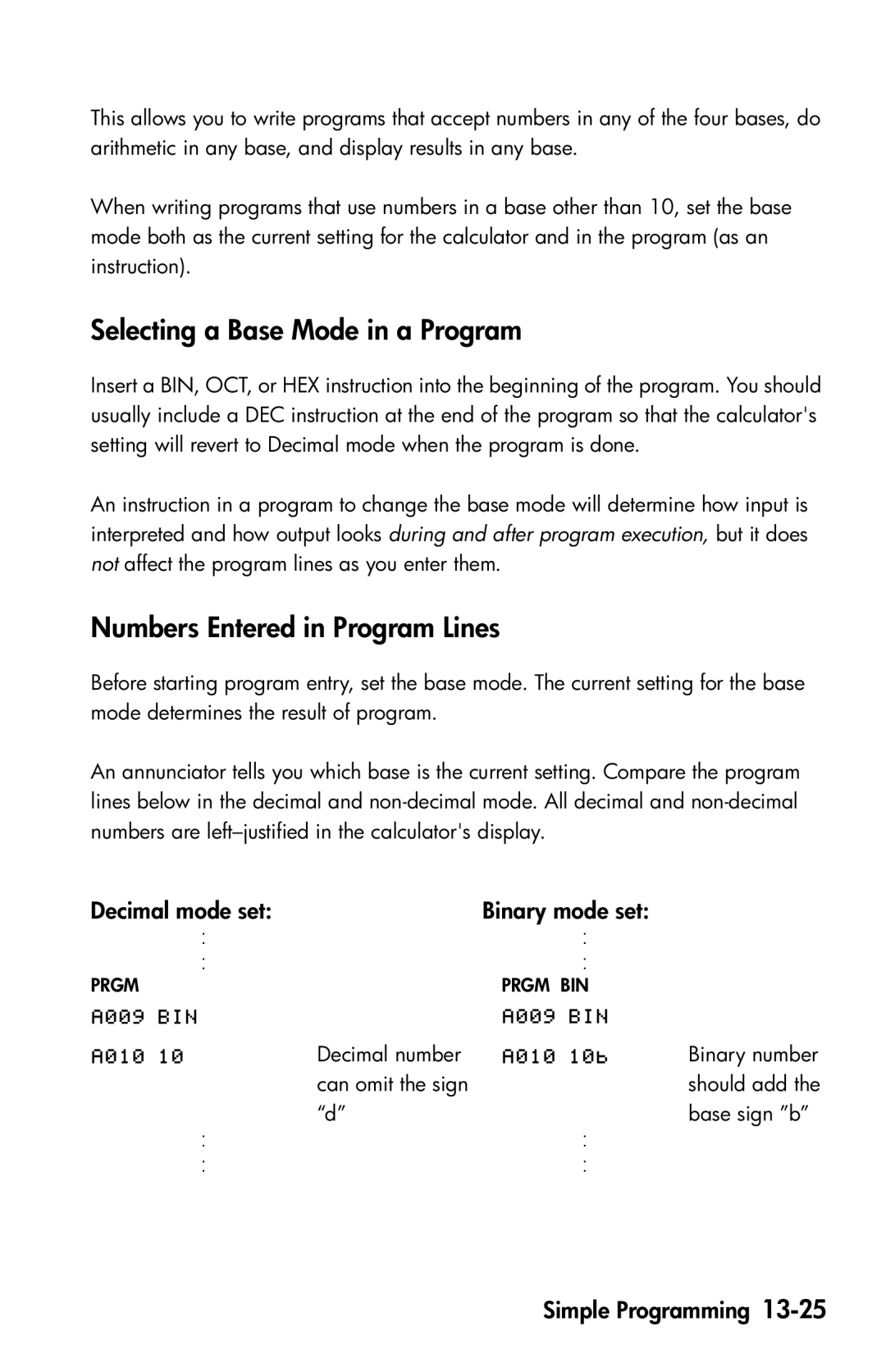This allows you to write programs that accept numbers in any of the four bases, do arithmetic in any base, and display results in any base.
When writing programs that use numbers in a base other than 10, set the base mode both as the current setting for the calculator and in the program (as an instruction).
Selecting a Base Mode in a Program
Insert a BIN, OCT, or HEX instruction into the beginning of the program. You should usually include a DEC instruction at the end of the program so that the calculator's setting will revert to Decimal mode when the program is done.
An instruction in a program to change the base mode will determine how input is interpreted and how output looks during and after program execution, but it does not affect the program lines as you enter them.
Numbers Entered in Program Lines
Before starting program entry, set the base mode. The current setting for the base mode determines the result of program.
An annunciator tells you which base is the current setting. Compare the program lines below in the decimal and
Decimal mode set: |
| Binary mode set: |
|
: |
| : |
|
: |
| : |
|
PRGM |
| PRGM BIN |
|
|
| |
|
| Decimal number | | Binary number |
| can omit the sign |
| should add the |
: | “d” | : | base sign ”b” |
|
| ||
: |
| : |
|
